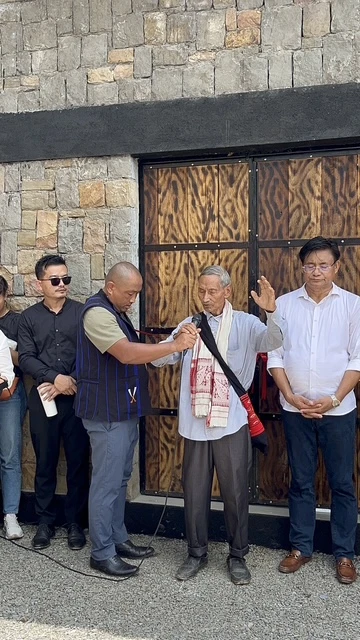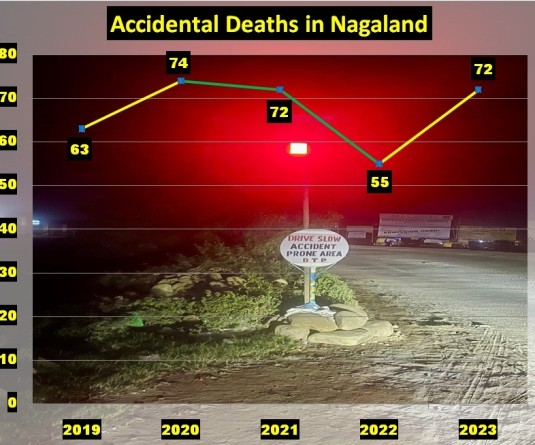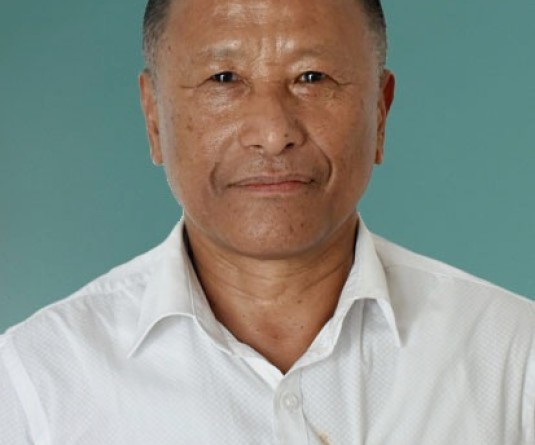The Morakjo Community Hall with architectural design by Lichan L Odyuo was inaugurated by MLA Mhathung Yanthan on July 29. (Morung photo)

Morung Express News
Wokha | July 29
Morakjo village under Wokha district saw the inauguration of three major projects - Morakjo Cultural Heritage Centre & Art Exhibition, Village Approach Road, and Community Hall on July 29.
The events were graced by Mhathung Yanthan, MLA and Advisor of Agriculture to the Chief Minister, as the special guest.
The celebration began with the inauguration of the Morakjo Cultural Heritage Centre & Art Exhibition under the theme “Hands of the People” Art from the Community, for the Community. The exhibition featured the works of emerging local artists Myingthunglo Y Tsopoe and Merilo Y Tsopoe, who shared reflections on their personal journeys, artistic inspiration, and importance of art in preserving community heritage.
A dedication prayer was offered by Yankhosao Odyuo, Pastor of Morakjo Baptist Church. The ribbon-cutting ceremony was formally led by the special guest.
The Morakjo Cultural Heritage Centre was designed by architect OKIRU and executed by the Morakjo Cultural Heritage Club, with financial support from the Department of Art & Culture, Government of Nagaland, alongside in-kind and community-led contributions from the club itself.
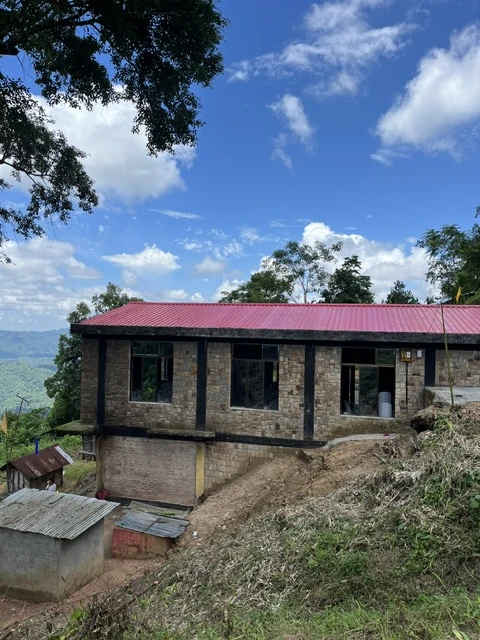
Following this, the Morakjo Village Approach Road was formally inaugurated. The prayer of dedication was led by Phyolumo Odyuo, Pastor of Morakjo AG Church. The road project was developed under the PMAAGSY Scheme by the Ministry of Tribal Affairs, Government of Nagaland.
The final segment was the inauguration of Morakjo Community Hall, constructed under the LADP Iconic Project 2024–25, with architectural design executed by Lichan L Odyuo. The prayer was led by Rev Tachow Odyuo, Pastor of Morakjo CRC.
Addressing the gathering, Advisor Mhathung Yanthan described the occasion as a “historic day,” particularly for the villagers of Morakjo. “This is a proud moment,” he said, “and a reflection of the unity, resilience and vision of the Morakjo people.”
On the Morakjo Community Hall, he said, “Despite financial constraints, the workmanship here speaks for itself. He hoped the hall would become “a house of unity” that would strengthen bonds among community members and become a space of blessings and collaboration.
Turning to the Morakjo Cultural Heritage Centre, Advisor Yanthan reflected on the significance of the project in preserving and promoting the village’s culture. He encouraged the villagers to continue enriching the space, saying, “Let this not be a one-time effort, add more, preserve more, and let the future generations see what we’ve safeguarded today. It is a way to honour our forefathers and remember our roots.”
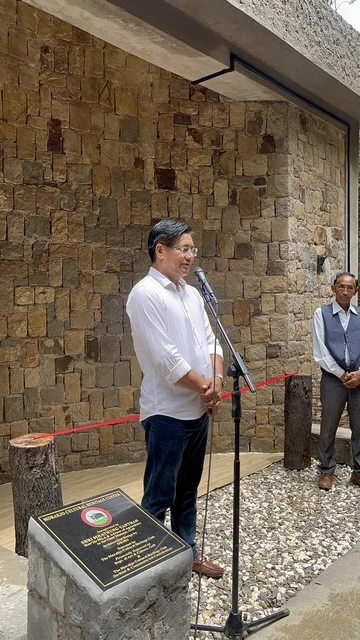
“This centre should serve as a vital platform to protect and showcase our identity, art, and oral traditions,” he added.
Speaking on the Village Approach Road, Advisor Yanthan informed the gathering that the road had been sanctioned under the PMAAGSY scheme by the Ministry of Tribal Affairs, in select areas during the past year. Emphasising the link between infrastructure and growth, he stated, “With roads come development. Better connectivity means better access to healthcare, education, and opportunities. It is therefore crucial that we maintain this road and make the best use of it.”
Addressing the increasingly pressing issue of Human-Elephant Conflict (HEC) in the region, the Advisor acknowledged the limitations faced even by the government departments in tackling the matter. “It is not something we can ignore or solve through force,” he said. Stressing the need for coexistence and proactive measures, he announced that Dr Rudra, an expert veterinarian specialising in elephants, had been invited to train villagers on ways to manage the conflict effectively. He urged all community members to actively participate and learn from the training.
The architect, Lichan L Odyuo revealed that he used Morak stone, found abundantly in the village, as the primary material for both constructions. Highlighting the significance of this local resource, he said, “This stone is not only useful for sharpening machetes but can also be used to build houses.” He emphasised the importance of utilising locally available materials, noting that this approach not only reduces construction costs but also honours the region’s identity and natural offerings.
Reflecting on the process, the architect said, “It took me five months to complete the hall,” and credited its timely completion to the collective effort of the village.
